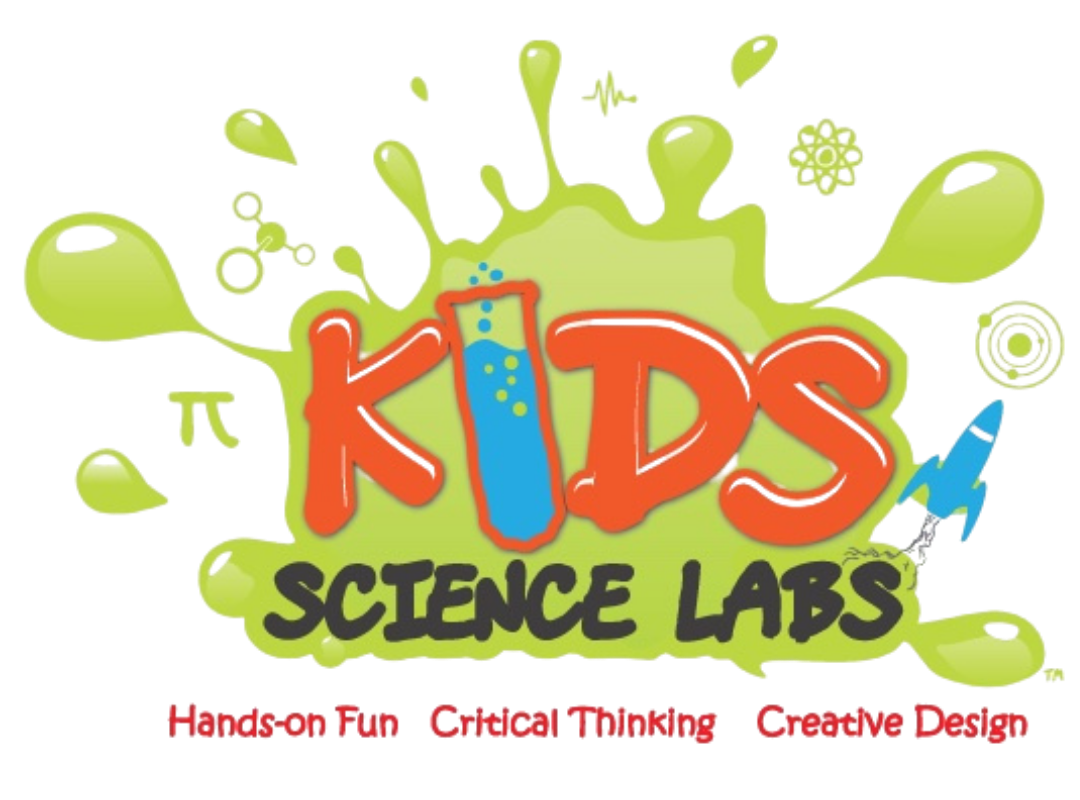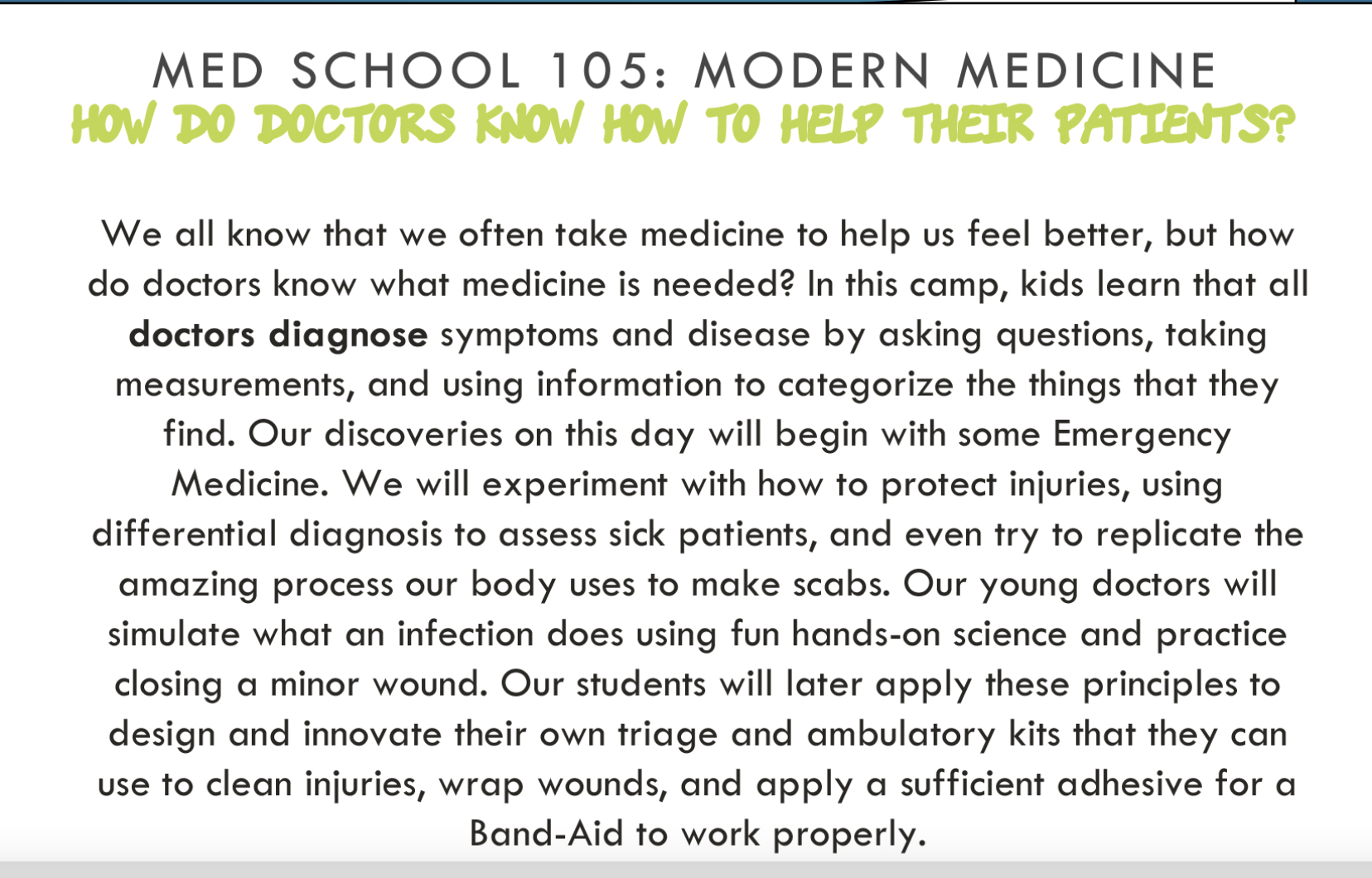Modern Medicine starts with Emergency Medicine at Kids Science Labs
When our kids receive any injury, as parents we offer them immediate emergency medical services to both treat the injury, and keep them calm/feeling well. On this first day of Med School for Kids, we discovered the ways we use triage to treat our injuries. Kids discover safely how to clean, treat, and repair the injury, using plates, and prepared materials to help them see that not every bandaid can work to fix an injury. Rather than tell kids that they should apply pressure to an injury, @ KSL, we discover the reasons for this through hands-on experimentation, including allowing students in 3rd-5th grade to begin the medical practice of suturing (time permitting, see below).
Our children are all familiar with bandaids, and since they are not toys at home, we wanted them to investigate the adhesives used, and types of absorbent gauze inside the bandaid, as well as how they are designed to avoid sticking to our hands. After kids ripped, cut, and measured the relative absorbency of real bandaids, our K-6th graders all designed their own injury treatment bandages from scratch. This included learning why we need to clean our wounds, apply pressure to prevent excessive bleeding, and exploring the types of gauze pads that may be helpful in designing a your own bandages. Our student scholars finished their day by taking it the next level as young emergency tech’s, by designing a take-home triage kit full of things that can aid us in treating a serious injury at home, Around our centers in Chicago and Seattle, we observed that some students included vinegar gauze pads, syringes, pipettes, jelly marble/instant snow ice packs, adhesive wrap and even custom saline solution (water + NaCl) with various concentration to stabilize an injury. We even saw some kids make a make-shift IV Kit in our design lab, which was cool.
Modern Medicine for students is a wonderful vehicle for discussing how the human body works. At Home, show your child different types of bandages and when you may want to use a large one vs. a small bandaid. Kids are much more comfortable with injuries when they understand the approaches that doctors and parents may take in treating them in an emergency.










